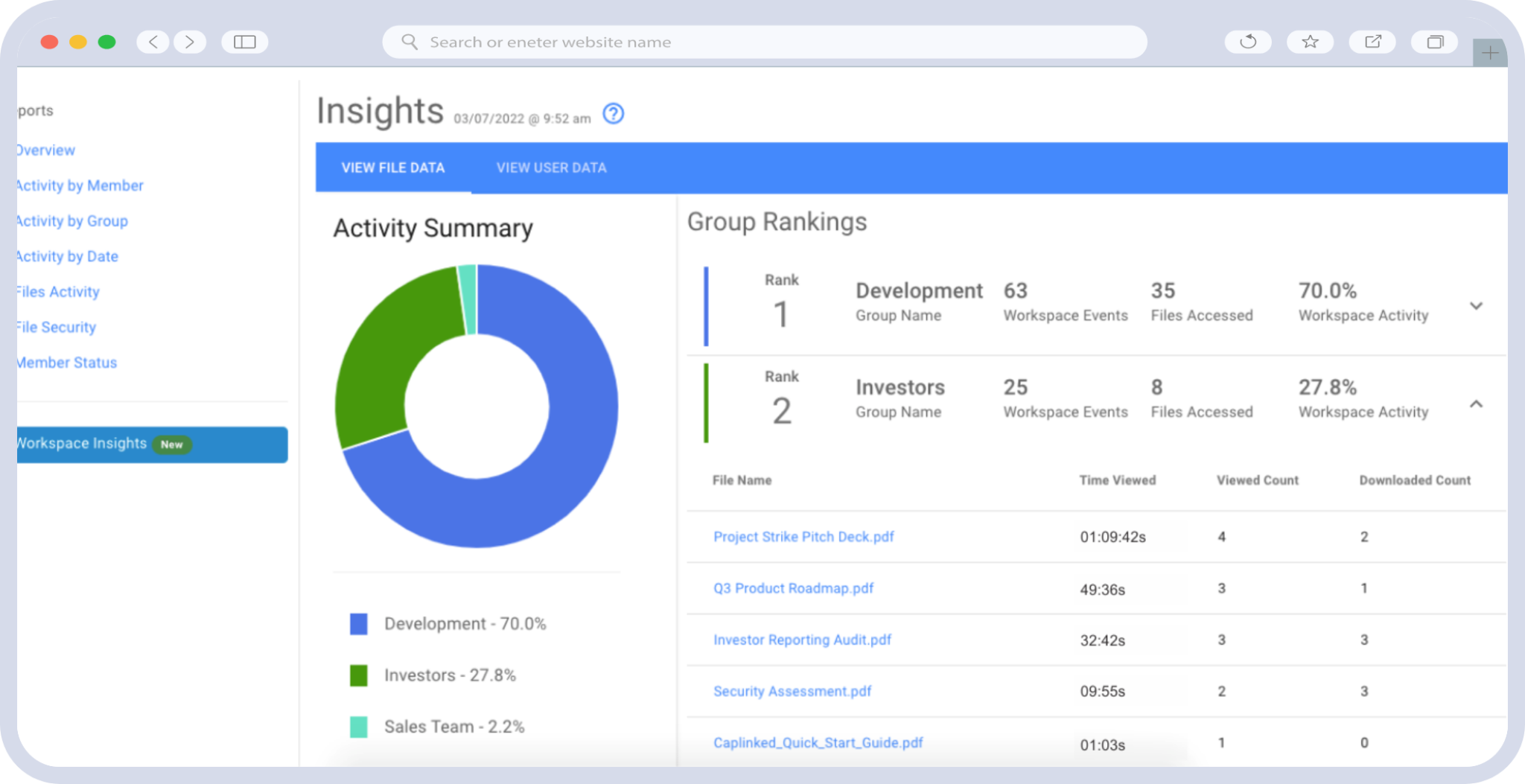Table of Contents
ToggleThe Myth of the “Cheap” Data Room
For years, legacy virtual data rooms (VDRs) competed on one dimension — price. They offered “discount” tiers, page-based billing, and stripped-down user interfaces that promised affordability. But in 2025, that illusion has collapsed.
Today’s deal environment — defined by regulatory complexity, AI integration, and cyber risk — has exposed a truth that compliance officers and deal teams already understand: a low-priced VDR can be the most expensive mistake you make.
When you measure total cost — time delays, security gaps, reputational exposure, and rework — legacy data rooms are anything but cheap.
The Price Trap: When “Affordable” Means Incomplete
The 2025 VDR Economy Has Shifted
A decade ago, price wars dominated the market. Intralinks, FirmRoom, and Datasite raced to offer lower-tier plans, promising “just enough” functionality for mid-market M&A.
But those models were built for a pre-regulatory world — before FedRAMP, before DORA, before SEC cyber-reporting. They assumed diligence meant uploading PDFs, not documenting governance or encryption controls.
By contrast, 2025 dealrooms are expected to prove who accessed what, when, and under which compliance policy. That means: granular access control, verifiable audit trails, and continuous encryption monitoring. Legacy systems weren’t architected for that. Retro-fitting them is costly; replacing them is inevitable.
The Hidden Costs Lurking Behind “Low Pricing”
Legacy VDR pricing models hide several expensive surprises. Per-page or per-gigabyte billing means costs escalate as diligence expands—which it invariably does. Compliance features like FedRAMP alignment, comprehensive audit logs, or SOC 2 documentation often become “premium” add-ons rather than standard capabilities. Integration limitations force manual workflows when legacy platforms block single sign-on, collaboration tools, or AI plug-ins. Service level agreements may promise support but bury 24-hour response clauses that leave teams waiting during critical deal phases. Finally, export lock-in can cost thousands when you attempt to retrieve your own data during off-boarding.
By the time a deal closes, your “cheap” data room can cost more than a modern platform like CapLinked, which bundles all of those essentials into a flat, predictable SaaS price.
Legacy Design: A Security Liability in 2025
Security Theater Isn’t Security
Datasite and Intralinks built their reputations on “bank-grade” security — a phrase that meant little and proved less. Under today’s frameworks — FedRAMP High, SOC 2 Type II, ISO 27001 — “bank-grade” isn’t enough. Real compliance demands: end-to-end encryption with customer-managed keys, regionally isolated storage zones, and 24/7 continuous monitoring for anomalous access. Legacy VDRs still rely on shared administrative access and multi-tenant databases. That creates unnecessary exposure and introduces compliance complexity under current SEC cybersecurity disclosure rules.
Regulators Now Treat Access Logs as Legal Evidence
The SEC’s 2025 cyber-disclosure rule requires public companies to document incident response and access controls. A missing or incomplete audit trail can itself be a violation. CapLinked’s modern architecture logs every action — view, download, permission change — in real time, providing immutable records that satisfy SEC, FINRA, and DoD requirements.
The Productivity Cost: Hours Lost = Deals Lost
Legacy Interfaces Slow Teams Down
Most deal professionals spend 20–30 hours per deal navigating folder trees, renaming files, or reconciling versions. Multiply that across an M&A team, and the “UI tax” becomes a major cost center. CapLinked’s streamlined workspace cuts those hours by half through: dynamic search and filtering, as well as real-time Q&A threads that eliminate back-and-forth email. In fast-moving markets, those hours mean competitive advantage — or a lost bid..
The Hidden Burden of Bad UX
Legacy VDRs were designed for IT departments rather than deal teams. Their interfaces often appear dated, load slowly on mobile devices, and confuse external users unfamiliar with enterprise software conventions. Upload and permission workflows require multiple clicks per file, while admin dashboards prioritize storage quotas over actionable insights into user activity and document engagement. Poor user experience isn’t merely a cosmetic issue—it introduces error risk and creates friction that can stall deal momentum at critical moments.
The Compliance Gap: Outdated VDRs Fail the Audit
Regulatory Readiness Is Now a Deal Requirement
In 2025, due diligence extends beyond financials. Buyers routinely request cyber risk assessments, AI governance documentation, data protection impact reports, and incident response plans. A VDR that can’t store, encrypt, and audit those files is a liability. Legacy systems lack the metadata tracking required to prove compliance with FedRAMP, NIS2, or the SEC’s 2025 AI rules.
Audit Trails as Defensive Evidence
Modern VDRs treat compliance as code. Each interaction creates a cryptographically sealed record. CapLinked users can export these logs directly for auditors or counsel, turning diligence into defense. Without this infrastructure, companies risk regulatory delay or fines after closing — a hidden cost legacy vendors never mention.
The AI Reality Check: Legacy Data Rooms Aren’t Machine-Ready
AI Workflows Need Structured Data
By 2025, M&A and private equity teams routinely use AI for: document summarization and classification, contract analytics, and risk trend detection. But AI tools can’t operate on unstructured file heaps locked behind dated UIs. Legacy systems don’t support metadata APIs or schema-level organization. CapLinked does. It standardizes document tags, permissions, and logs so AI models can work securely within FedRAMP and SOC 2 boundaries.
AI Compliance Adds a New Cost Dimension
The SEC and IOSCO are both drafting AI risk guidelines that require auditability of model inputs. If a deal team uses AI tools for analysis, they must show what data was used and where it was stored. CapLinked’s integration-ready architecture provides that traceability. Legacy systems can’t — and that deficiency will soon translate into lost eligibility for regulated transactions.
The Opportunity Cost: Brand and Reputation
Every security incident has a PR price. A breach linked to a legacy VDR can erode brand trust overnight. 2024 saw multiple data-leak incidents involving financial documents stored in outdated systems. The damage wasn’t technical — it was reputational.
Deal teams that choose modern VDRs signal maturity to regulators, investors, and clients. They show that security and compliance aren’t afterthoughts — they’re foundational. CapLinked customers routinely win business from competitors still using legacy platforms, not because of marketing, but because of perceived trustworthiness.
The ROI Equation: Total Cost of Ownership in 2025
Calculating TCO for Modern vs. Legacy VDRs
| Category | Legacy VDR (Intralinks/Datasite) | Modern VDR (CapLinked) |
|---|---|---|
| Licensing Model | Per-page / per-user / per-GB | Flat enterprise SaaS pricing |
| Compliance Support | Add-on modules | Built-in FedRAMP & SOC 2 |
| Setup Time | 5–7 days | Same day |
| Audit Trail | Partial | Real-time immutable logs |
| Integration | Limited | SSO, Drive, API |
| Data Export | Manual, fee-based | Free self-service export |
| Support | 24 hr response window | Priority phone/email support |
| Risk Exposure | Shared admin access | GovCloud-aligned |
When you total those differences across a 12-month deal cycle, CapLinked’s flat pricing delivers 30–40% lower total cost of ownership compared to legacy vendors — even when headline price looks higher.
The Efficiency Multiplier
A faster VDR reduces time to close and increases team capacity without hiring. If a firm runs 10 deals per year and saves one week per deal, the value can exceed $200K in real productivity gains — more than offsetting any licensing difference.
The Next Frontier: Compliance as Value, Not Cost
By 2026, the conversation won’t be about “what does the VDR cost?” It will be about “what risk does it eliminate?” Organizations that view compliance and security as strategic value drivers are outpacing those that treat them as checklist expenses. Modern VDRs turn that philosophy into infrastructure — every audit log and encryption key is proof of resilience. CapLinked’s mission aligns with that future: simplify secure collaboration without compromise, so deals move fast and stand up to scrutiny.
Conclusion: The Real Cost Is Risk
The cheapest data room is rarely the best deal. Legacy systems built for a simpler era are crumbling under the weight of modern requirements. The future belongs to platforms that combine security, speed, and compliance in one flat-rate package. CapLinked is that platform — not because it’s the lowest price, but because it’s the highest value.




